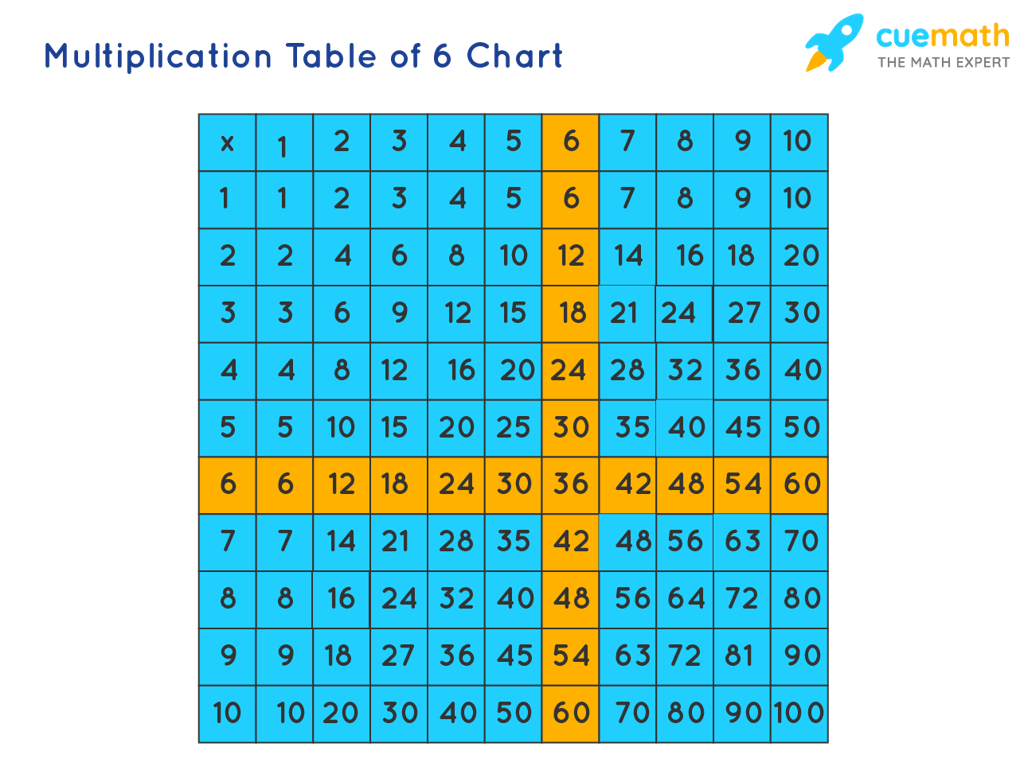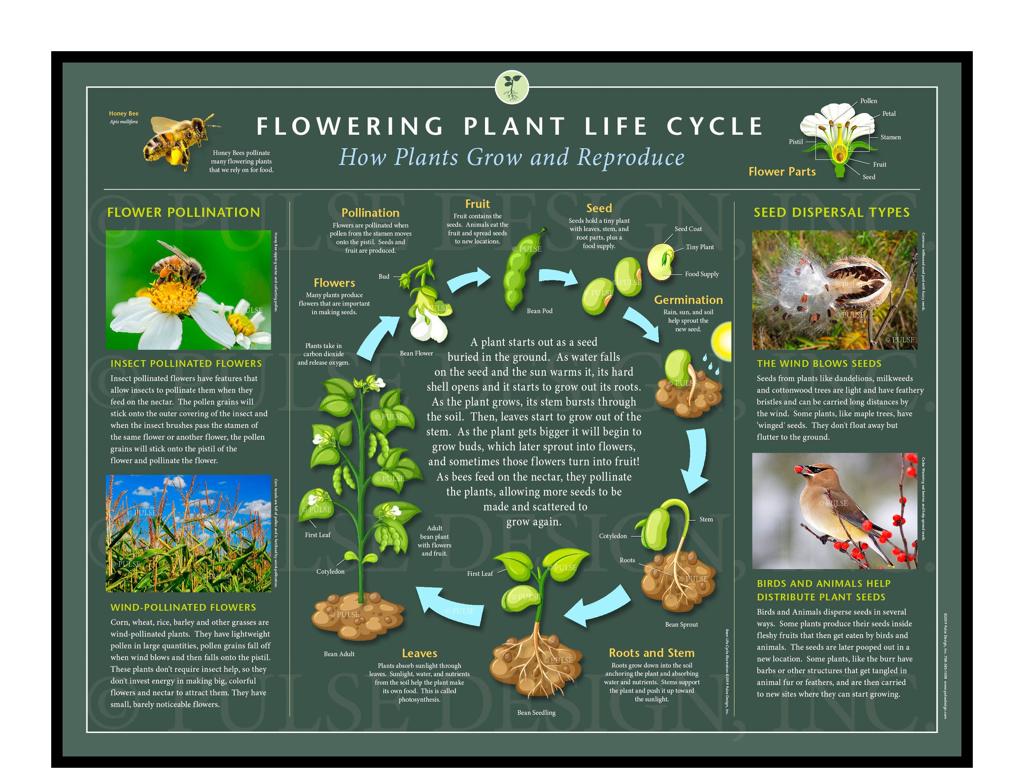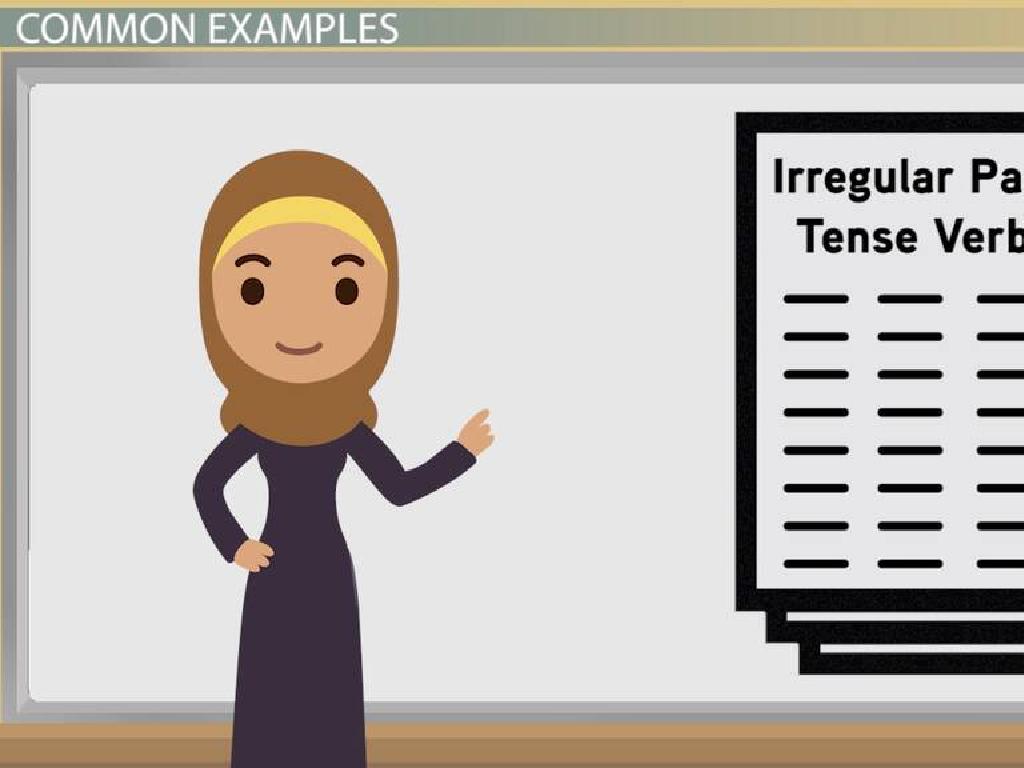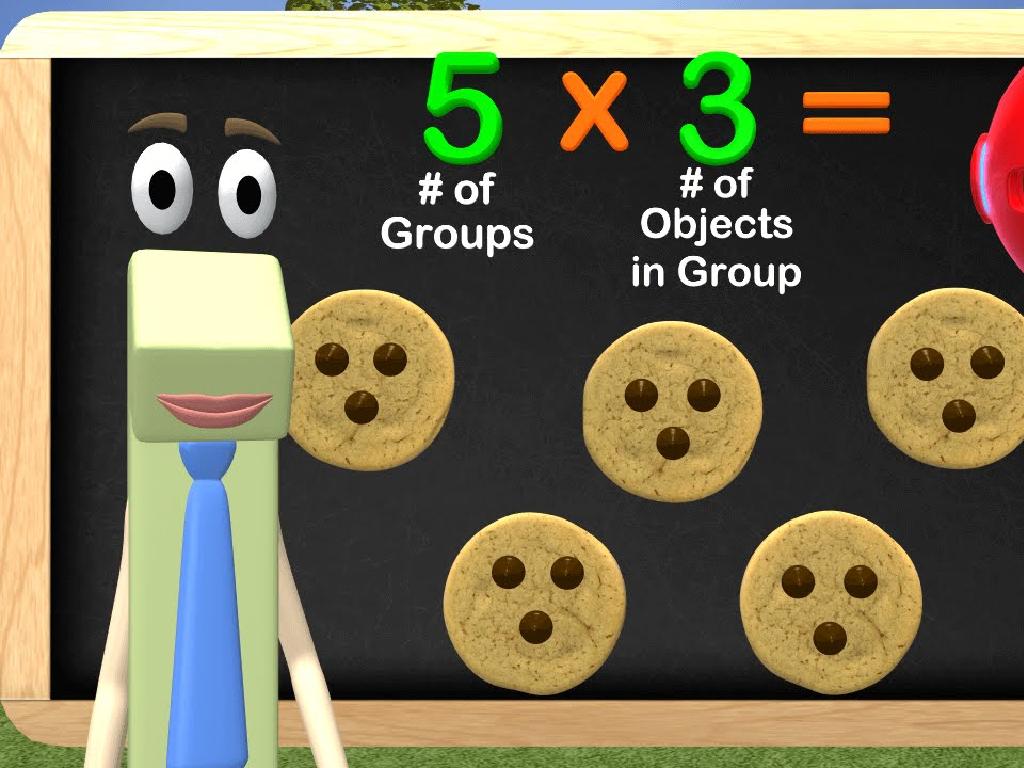Identify Functions Of Plant Cell Parts
Subject: Science
Grade: Sixth grade
Topic: Cells
Please LOG IN to download the presentation. Access is available to registered users only.
View More Content
Welcome to the World of Cells!
– Cells: Life’s building blocks
– Plant cells’ role in nature
– Plants use cells to grow, reproduce, and perform photosynthesis.
– Exploring plant cell parts
– We’ll look at parts like the nucleus, cell wall, and chloroplasts.
– Functions of each part
– Learn how each part contributes to the cell’s life and health.
|
This slide introduces the concept of cells as the fundamental units of life, emphasizing their importance in all living organisms, including plants. Highlight the unique role of plant cells in nature, such as their ability to perform photosynthesis, which is essential for life on Earth. The lesson will cover the various parts of a plant cell, such as the nucleus, which controls cell activities; the cell wall, which provides structure and support; and the chloroplasts, where photosynthesis occurs. Encourage students to think about how each part of the cell has a specific function that contributes to the overall health and operation of the plant. This will set the stage for a more detailed exploration of each cell part in the following slides.
Exploring the Building Blocks of Life: Cells
– Define a cell
– The basic unit of life, found in all living things.
– Cells’ role in organisms
– Cells are the smallest functioning units that form tissues and organs.
– Compare plant and animal cells
– Plant cells have cell walls and chloroplasts, unlike animal cells.
– Plant cells’ unique parts
|
This slide introduces the concept of cells as the fundamental units of life. Begin with a definition of a cell, emphasizing that it is the smallest unit that can be considered alive. Explain how cells combine to form tissues and organs, contributing to the overall function of living organisms. Highlight the differences between plant and animal cells, such as the presence of a cell wall and chloroplasts in plant cells, which are absent in animal cells. This comparison will set the stage for understanding the unique functions of plant cell parts, which will be explored in subsequent slides. Encourage students to think about the variety of cells in their own bodies and in plants they are familiar with.
Exploring Plant Cell Parts
– Identify plant cell parts
– Cell Wall: Provides protection
– Like a strong wall around a castle, it gives the cell its shape and protects it from outside forces.
– Cell Membrane: Controls movement
– It’s the gatekeeper, deciding what gets in or out, maintaining the cell’s environment.
– Understanding functions
|
This slide aims to introduce students to the basic components of a plant cell and their functions. Start by explaining that just like different organs in our body have different roles, each part of a plant cell has a specific function. The cell wall is unique to plant cells and provides rigidity and protection, much like a suit of armor. The cell membrane is crucial for maintaining homeostasis within the cell by controlling the passage of substances. Encourage students to think of the cell wall as the cell’s personal security system and the membrane as its selective doorway. Use analogies and encourage students to visualize the components to better understand their functions.
Plant Cell Powerhouse
– Chloroplasts: Photosynthesis centers
– Chloroplasts convert sunlight into glucose during photosynthesis.
– Mitochondria: Cellular energy powerhouses
– Mitochondria break down nutrients to release energy for the cell.
– Energy production in plant cells
– Utilization of produced energy
|
This slide focuses on the organelles within plant cells responsible for energy production and usage. Chloroplasts are unique to plant cells and are where photosynthesis occurs, converting sunlight into chemical energy stored as glucose. Mitochondria are found in both plant and animal cells and are involved in the process of cellular respiration, where they break down nutrients to release energy that the cell can use for various functions. Understanding these processes is crucial for students as they explain how plants are able to grow, develop, and maintain their cellular functions. Encourage students to think about the relationship between these two organelles and how they work together to keep the plant cell energized.
The Control Center of Plant Cells: The Nucleus
– The nucleus: Cell’s command center
– Like a brain, the nucleus directs cell functions.
– DNA: Blueprint within the nucleus
– DNA holds instructions for proteins and traits.
– Nucleus’s role in cell regulation
– The nucleus sends signals to start/stop processes.
– How the nucleus directs cell activities
– It ensures the cell functions smoothly and properly.
|
This slide introduces the nucleus as the central command center of plant cells, drawing an analogy to the brain’s role in the human body. Emphasize the importance of DNA, which resides in the nucleus and contains the genetic instructions necessary for the development and function of living organisms. Explain how the nucleus regulates cell activities by controlling the synthesis of proteins, which are essential for various cell functions. Discuss how the nucleus communicates with other parts of the cell to coordinate growth, division, and response to the environment. Encourage students to think of the nucleus as the manager of a factory, overseeing all operations to ensure everything runs smoothly.
Plant Cell Support and Storage
– Vacuoles: Store water and nutrients
– Vacuoles are like backpacks for cells, holding essentials.
– Cytoplasm: Jelly-like cell filler
– Cytoplasm is the fluid where cell parts float.
– Cytoskeleton: Maintains cell shape
– Cytoskeleton is like a skeleton, keeping the cell sturdy.
– Importance of support and storage
|
This slide focuses on the support and storage functions within plant cells. Vacuoles are essential for storing not just water and nutrients, but also waste products, helping to maintain the internal environment of the cell. The cytoplasm is the medium that holds all the organelles in place and is involved in cellular processes. The cytoskeleton provides structural support, much like our bones, and is crucial for maintaining the cell’s shape, providing pathways for the movement of organelles within the cell, and playing a role in cell division. Emphasize the importance of these components in keeping the cell functional and healthy. Encourage students to think of analogies for these parts to better understand their functions.
Putting It All Together: Plant Cell Functions
– Review plant cell parts
– Recap: nucleus, chloroplasts, cell wall, etc.
– How cell parts function together
– Each part has a unique role in cell health and operation
– Explore interactive cell diagram
– Use online tools to examine cell structures
– Discuss the role of each part
|
This slide aims to consolidate the students’ knowledge of plant cell parts and their functions. Begin with a quick review of the key components such as the nucleus, chloroplasts, mitochondria, cell wall, and vacuoles. Explain how these parts contribute to the overall functioning of the cell, emphasizing the synergy between them. Introduce an interactive diagram or online simulation where students can visually explore the plant cell and its parts. Encourage them to click on each part to learn more about its role and function. Conclude with a discussion on how these parts work in unison to support the life of the plant. This interactive approach helps solidify their understanding and makes the learning process engaging.
Class Activity: Build a Plant Cell Model
– Create a 3D plant cell model
– Use clay and craft supplies
– Work together in groups
– Collaboration enhances learning
– Label each cell part
– Helps memorize functions
|
This hands-on activity is designed to help students identify and understand the functions of plant cell parts by creating a 3D model. Provide various colors of clay for different cell parts, construction paper for the base, and labels for naming each part. Encourage students to work in small groups to promote teamwork. As they build, they should discuss the function of each part and label it accordingly. This collaborative effort aids in reinforcing their knowledge through a tactile learning experience. Possible variations of the activity could include using different materials for the cell model, such as gelatin or food items, or assigning each group a specific cell part to focus on and then combining them to create a complete cell.
Conclusion: Plant Cell Functions
– Recap of plant cell parts
– Functions of each part
– Nucleus directs activities, chloroplasts enable photosynthesis, etc.
– Q&A session
– Clarify doubts, reinforce learning
– Homework assignment
– Draw, label parts like nucleus, cell wall, chloroplasts
|
As we wrap up today’s lesson on plant cell parts and their functions, let’s review the main components such as the nucleus, cell wall, and chloroplasts, and remember their roles. The nucleus acts as the control center, while the chloroplasts are crucial for photosynthesis. The cell wall provides structure and support. Now, let’s open the floor for a Q&A session to address any uncertainties and ensure everyone is clear on the material. For homework, students are to draw and label a plant cell, identifying each part and its function. This will help solidify their understanding and prepare them for the next class. Provide an example of a labeled plant cell to guide them in their homework.






